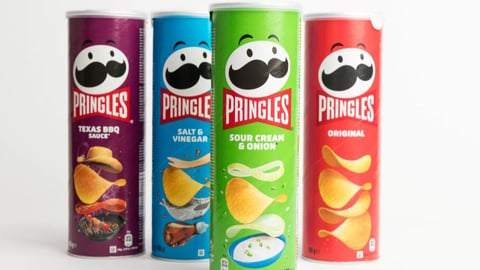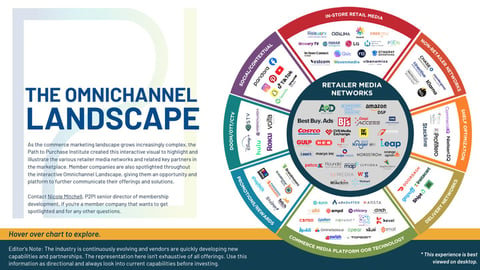How PepsiCo Evaluates Retail Media Networks
While the rapid ascent of retail media may be exciting, the retailers that want PepsiCo’s spend need to bring their receipts.
“Retail media networks are great, but it's not a free value transfer from us to the retailers,” said Ram Krishnan, PepsiCo CEO of North America beverages, at Groceryshop in Las Vegas this week. “They need to meet a certain threshold at other media bought, like the media that we do with Meta or Google, and I think that's the conversation that we want to have.”
Building off the benefits of precision loyalty, he said there’s little question that RMNs drive value in the middle and lower funnels, and the CPG is very willing to invest within them.
“Having said that, I would also submit that not all retailers should be media companies,” he said, noting that the CPG spends an inordinate amount of time looking at all levers. While scale may be a consideration, it’s not the whole story.
Among these levers:
- How much can the retail media networks target?
- Are measurements clear across every touchpoint?
- What is the creative flexibility with search and video?
- Is there an API?
“They need to meet all of the same criteria as far as how we could evaluate a media investment,” he stressed. “The good news is we have decades and decades of measuring those things, and we're bringing the same rigor to retail media networks.”
Global Omnicommerce Adoption
As one of the largest consumer goods companies in the world, PepsiCo carries a broad vantage point on consumer behavior, and Krishnan detailed a few global omnichannel trends they expect to impact the U.S.
China has been at the forefront of the omni ecosystems and was the first region to connect physical stores with digital commerce, social media, digital payments, and last-mile logistics, he noted. Social and content commerce continues to increase, and grocery now accounts for 20% of e-commerce mix, making it the third-largest category after apparel and electronics.
While shopping in China is about entertainment, both physical and digital shopping in the U.S. remain centered upon efficiency. As content commerce grows and truncates the shopper journey, they expect it will increase in the U.S. and impact multiple categories.
Krishnan said the U.K. has always been at the forefront of e-commerce adoption, and PepsiCo is monitoring the rise of rapid commerce, which is becoming a larger portion of their mix.
“What's fascinating is that 81% of the trip is unplanned. So then how do you get into the consideration set when it's unplanned? I think there's some learnings there for us as that comes into the U.S. market and starts accelerating.”
Looking to stay connected to the consumer goods industry? Sign up for a new kind of insider access with CGT's texting community. Share your opinion, and send your questions right to Lisa Johnston for 1:1 conversations. Texts arrive twice a week. Learn more or sign up below.





